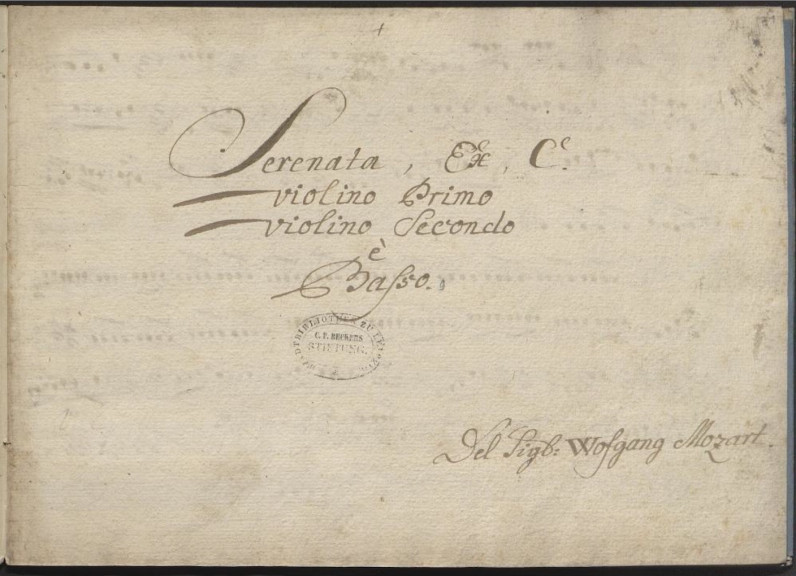New Mozart Work Discovered

It’s not every day a famous composer drops new music, especially when that composer has been dead for over 230 years. But today we’re in luck! Researchers from the International Mozarteum Foundation of Salzburg recently discovered what they believe to be a previously unknown string trio by none other than Wolfgang Amadeus Mozart (1756–1791).
They found the piece in the Carl Ferdinand Becker collection in the Music Library of the Leipzig Municipal Libraries, one of the largest public music libraries in Germany. Becker (1804–1877) was a composer, musician, and writer who amassed a substantial collection of early printed music and manuscripts, which he donated to the Leipzig City Library in 1856.
According to a press reslease from the library, the researchers were there compiling the latest edition of the Köchel-Verzeichnis, the comprehensive catalogue of Mozart’s oeuvre that has been published and updated to reflect current scholarship since 1862. (The KV or K number printed next to the title of a Mozart work comes from this catalogue.) What they uncovered is a string trio titled “Serenata ex C” or “Serenade in C.” Running about 12 minutes in length, the piece comprises seven miniature movements. The latest edition of the Köchel-Verzeichnis lists the work as KV. 648 with the title “Ganz kleine Nachtmusik,” or “Very Little Night Music,” a play on Mozart’s famous “Eine kleine Nachtmusik.”
Scholars believe Mozart composed this work in the mid to late 1760s, when he was just a preteen. Specifically, their reasoning is that the title page lists his name as “Wo[l]fgang Mozart”; the composer only began inserting his middle name, "Amadeo" (later "Amadé"), in 1769, when he first traveled to Italy with his father, Leopold. In addition, the style of the Serenade matches Mozart’s early compositional style.
The score, however, is not in the young composer’s hand. Instead, the researchers believe it was a copy made around 1780. It is written in brown ink on handmade paper, and the individual parts (violin 1, violin 2, and bass) are bound individually within it.
Although the work is not earth-shattering in its originality, it does mark a significant piece in the puzzle regarding Mozart’s compositional output. Ulrich Leisinger, the head of research at the International Mozarteum Foundation and editor of the latest edition of the Köchel-Verzeichnis, explained in a statement: “Until now the young Mozart has been familiar to us chiefly as a composer of keyboard music and of arias and sinfonias, but we know from a list drawn up by Leopold Mozart that he wrote many other chamber works in his youth, all of them unfortunately lost. It looks as if—thanks to a series of favorable circumstances—a complete string trio has survived in Leipzig. The source was evidently Mozart’s sister [Nannerl], and so it is tempting to think that she preserved the work as a memento of her brother. Perhaps he wrote the Trio specially for her and for her name day.”
The work had its modern premiere at the launch of the new Köchel-Verzeichnis in Salzburg on Thursday, September 19, 2024. It received its German premiere two days later at the Leipzig Opera House. You can peruse a digitization of the score here and listen to the recording of the premiere below.



